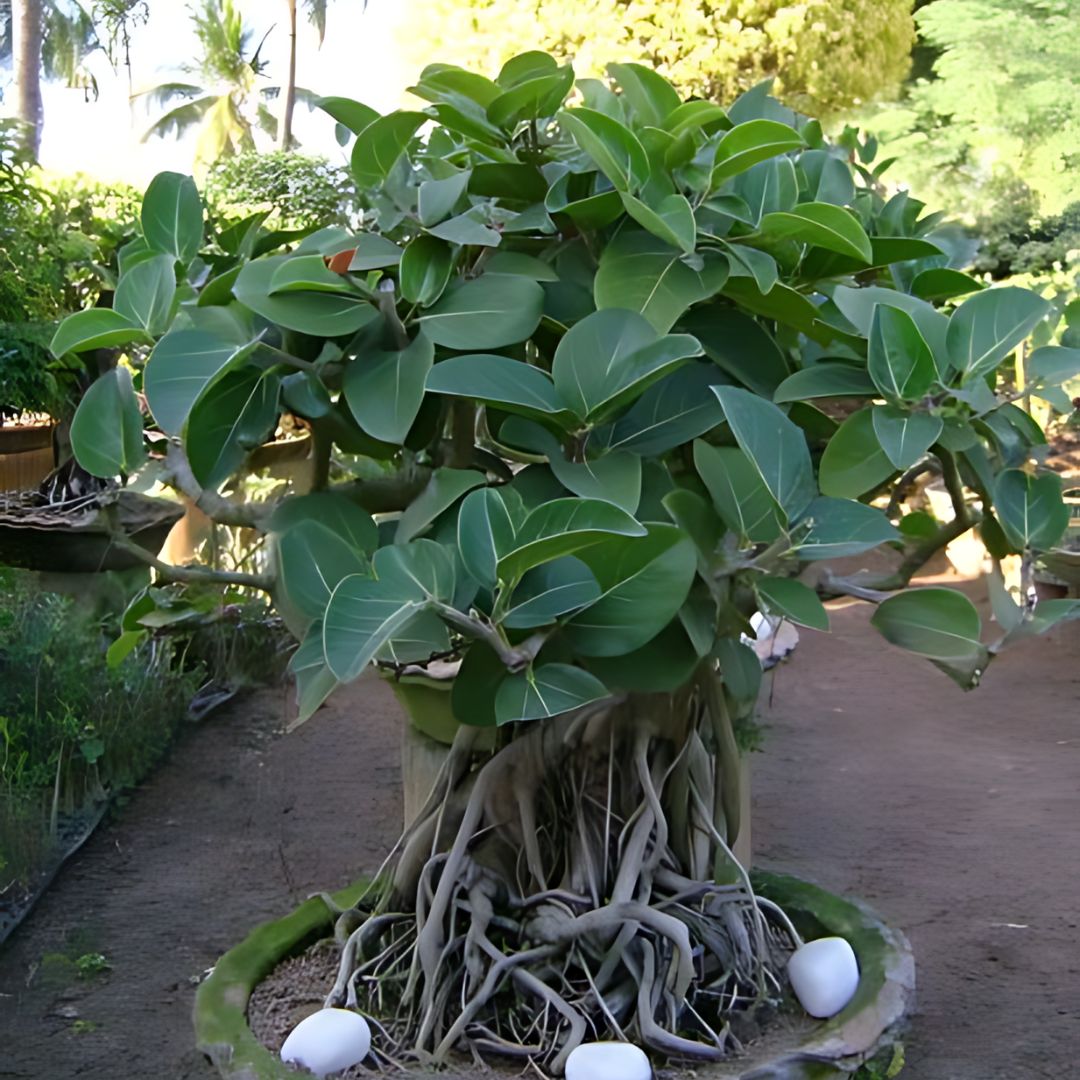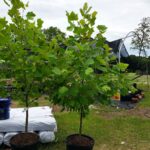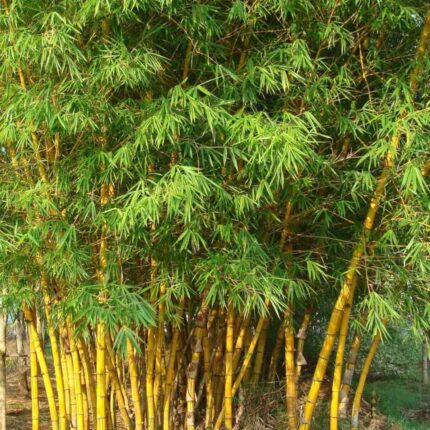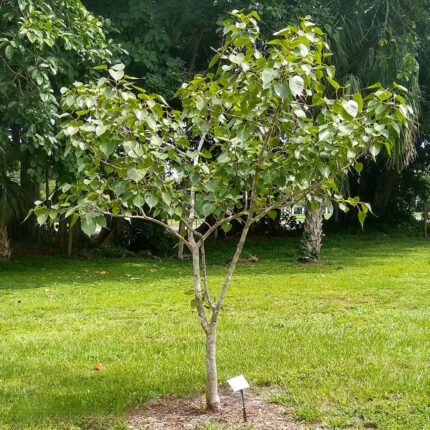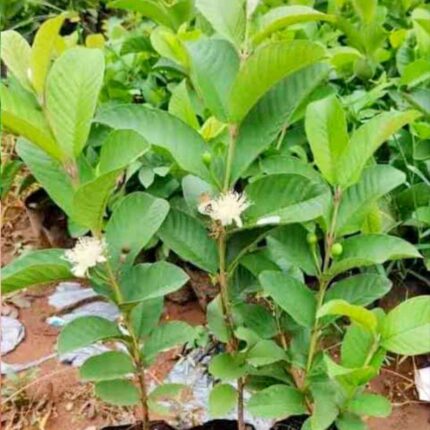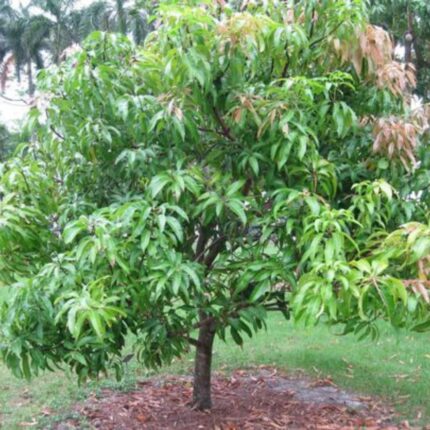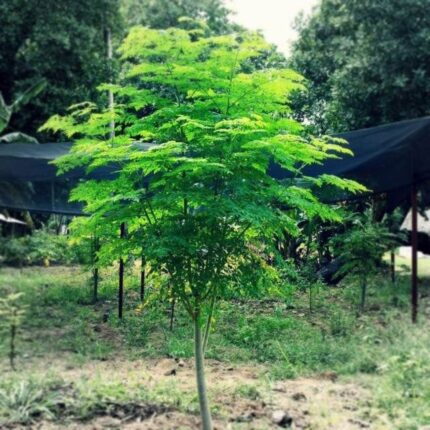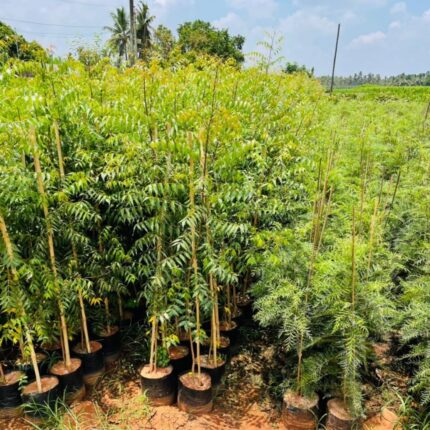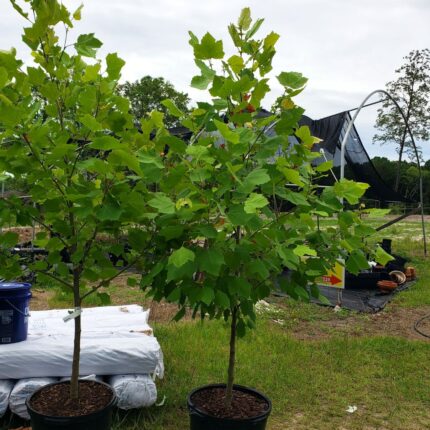Banyan (बरगद)
₹2,998.00
The Banyan tree, scientifically known as Ficus benghalensis, is a large, evergreen tree renowned for its extensive canopy and aerial roots. Native to the Indian subcontinent, it is considered a symbol of immortality and longevity in many cultures. The tree is known for its wide spread, often covering several acres with its expansive branches and roots that descend from its branches to the ground, forming additional trunks.
Description
Common Names
- Banyan tree
- Indian banyan
Benefits
- Shade Provider: The Banyan tree’s large canopy provides ample shade, making it a popular choice for public parks and gardens.
- Habitat for Wildlife: The tree supports a diverse range of wildlife, offering habitat and food for birds, insects, and other animals.
- Air Quality Improvement: Like other trees, the Banyan absorbs carbon dioxide and releases oxygen, improving air quality.
- Erosion Control: The extensive root system helps prevent soil erosion, particularly in areas prone to heavy rains.
Cultural Significance
- Religious Importance: The Banyan tree holds significant religious importance in Hinduism and Buddhism. It is often associated with longevity and is worshipped in many regions.
- Symbolism: In many cultures, the tree symbolizes strength, stability, and resilience due to its long life and robust structure.
Uses
- Traditional Medicine: Various parts of the Banyan tree, including its leaves, bark, and roots, are used in traditional medicine. They are believed to have anti-inflammatory, astringent, and anti-diabetic properties.
- Construction and Crafting: The wood and roots of the Banyan tree are used in making furniture and handicrafts.
- Environmental Landscaping: Due to its grandeur and shade-providing qualities, the Banyan tree is often planted in large public spaces, temple grounds, and roadside avenues.
Growth and Care
- Climate: The Banyan tree thrives in tropical and subtropical climates.
- Soil: It prefers well-drained, fertile soil but is highly adaptable to various soil types.
- Watering: Young trees require regular watering, but established trees are drought-tolerant.
- Sunlight: The tree requires full sunlight to grow to its full potential.
- Pruning: Minimal pruning is required, mainly to remove dead or diseased branches and manage its size in urban settings.
Interesting Facts
- Aerial Roots: The Banyan tree is famous for its aerial roots, which grow down from the branches to the ground, where they form new trunks, allowing the tree to spread over a large area.
- Longevity: Some Banyan trees are known to live for several hundred years, with some ancient specimens still standing today.
The Banyan tree is more than just a plant; it’s a symbol of natural beauty, cultural heritage, and environmental importance. Planting a Banyan tree is a long-term commitment to creating a legacy of greenery and sustainability.
Related products
Bamboo (बांस)
₹2,998.00
Ficus Religiosa (पीपल)
₹2,998.00
Guava (अमरूद)
₹2,998.00
Mango (आम)
₹2,998.00
Mango trees are evergreen and can grow up to 30-40 meters tall, with a canopy that can span several meters wide. The leaves are long and glossy, and the tree produces fragrant, small white or pink flowers. The fruit varies in size, shape, and color, but is typically oval or round, with a skin that can range from green to yellow to red when ripe. The flesh inside is juicy and sweet, surrounding a large, flat seed.
Moringa (सहजन)
₹2,998.00
Moringa, often referred to as the "miracle tree," is a highly versatile and resilient plant native to the Indian subcontinent. It is renowned for its exceptional nutritional value, medicinal properties, and environmental benefits. Moringa is widely cultivated in tropical and subtropical regions around the world.
Neem (नीम)
₹2,998.00
Neem is a fast-growing, evergreen tree native to the Indian subcontinent. It can reach a height of 15-20 meters (49-66 feet), and in rare cases, up to 35-40 meters (115-131 feet). It is known for its robust structure, bright green foliage, and fragrant white flowers. The tree produces small, olive-like fruit that turns yellow when ripe.
Sycamore (गूलर)
₹2,998.00
The sycamore tree (Platanus occidentalis) is a large, deciduous tree native to North America. Known for its distinctive mottled bark and broad canopy, the sycamore is a majestic presence in many landscapes. The tree can reach heights of 70 to 100 feet or more, with a trunk diameter often exceeding 3 to 8 feet. Its leaves are broad, with three to five lobes, resembling those of a maple tree, and can grow up to 10 inches wide.

